| Weight | 1 lbs |
|---|---|
| Dimensions | 9 × 5 × 2 in |
| target | Herpes simplex Virus 2 Glycoprotein G |
| species reactivity | Herpes Simplex Virus |
| applications | ELISA |
| assay type | Indirect & quantitative |
| available size | 1 mg |
Herpes simplex Virus 2 Glycoprotein G Antigen BA1052RVS-G
$1,054.00
Summary
- Virion/Serion Immunologics Antigen for research use (RUO)
- Herpes Simplex Virus (HSV) 2 Glycoprotein G Antigen, recombinant
- Suitable for detection of IgA, IgG & IgM antibodies in ELISA
- Lot specific concentration, specified in mg/mL
- 1 mg
Herpes simplex Virus 2 Glycoprotein G Antigen BA1052RVS-G
| kit |
|---|
| Research area Infectious Disease |
| Storage Store at -65°C. Avoid freeze/thaw cycles. Sonicate before use. |
| Form liquid |
| Associated products Herpes simplex Virus 2 Glycoprotein G Antigen (BA1052RVS-G) Herpes simplex Virus 2 Antigen (BA1052VS) Herpes Simplex Virus 2 gP IgG Control Serum (BC1052G) Herpes Simples Virus 2 IgM Control Serum (BC1052M) Herpes simplex Virus 2 IgG ELISA Kit (ESR1052G) Herpes simplex Virus 2 IgM ELISA Kit (ESR1052M) |
| target relevance |
|---|
| Organism Herpes Simplex Virus 1/2 |
| Protein names Herpes Simplex Virus (HSV) |
| Structure and strains Herpes simplex virus 1 and 2 (HSV-1 and HSV-2), also known by their taxonomic names Human alphaherpesvirus 1 and Human alphaherpesvirus 2, are two members of the human Herpesviridae family, a set of viruses that produce viral infections in the majority of humans. Both HSV-1 and HSV-2 are very common and contagious. They can be spread when an infected person begins shedding the virus. As of 2016, about 67% of the world population under the age of 50 had HSV-1. In the United States, about 47.8% and 11.9% are estimated to have HSV-1 and HSV-2, respectively, though actual prevalence may be much higher. Because it can be transmitted through any intimate contact, it is one of the most common sexually transmitted infections. |
| Detection and diagnosis An important field of application for HSV serology - also during latency - is the detection of serotype-specific HSV IgG antibodies in order to identify potential HSV carriers who could infect susceptible individuals. In particular, the identification of HSV 2 serotype-specific antibodies in pregnant women, who present a high risk of transferring the virus to a newborn child, is recommended. The serological typing of an HSV infection is usually performed by identifying IgG antibodies directed against the viral surface glycoproteins G (gG) of HSV 1 (gG1) and HSV 2 (gG2). Due to the fact that these antibodies are only produced some weeks after a primary infection, the determination of serotype-specific antibodies can also assist in the differentiation between primary infection and reactivation |
Data
Publications
| pmid | title | authors | citation |
|---|---|---|---|
| We haven't added any publications to our database yet. | |||
Protocols
| relevant to this product |
|---|
| BA1052RVS-G protocol |
Documents
| Product data sheet |
|---|
| BA1052RVS-G |
Only logged in customers who have purchased this product may leave a review.
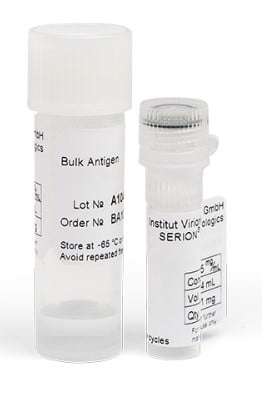
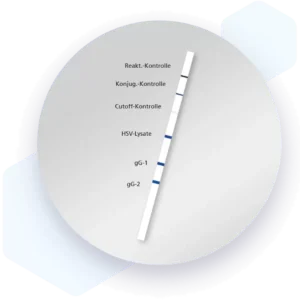
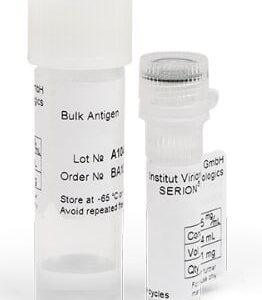
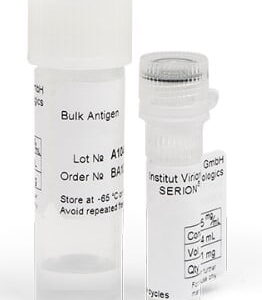

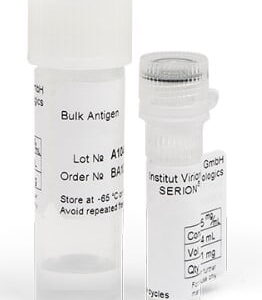



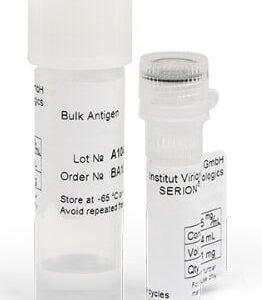
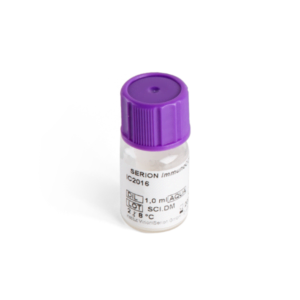
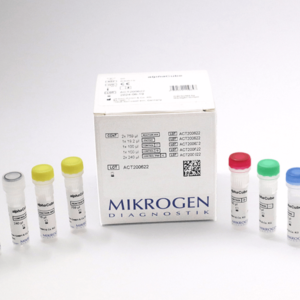

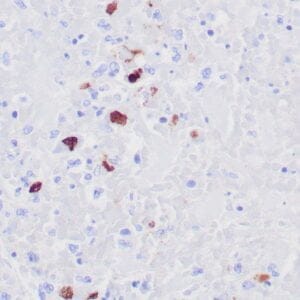
Reviews
There are no reviews yet.